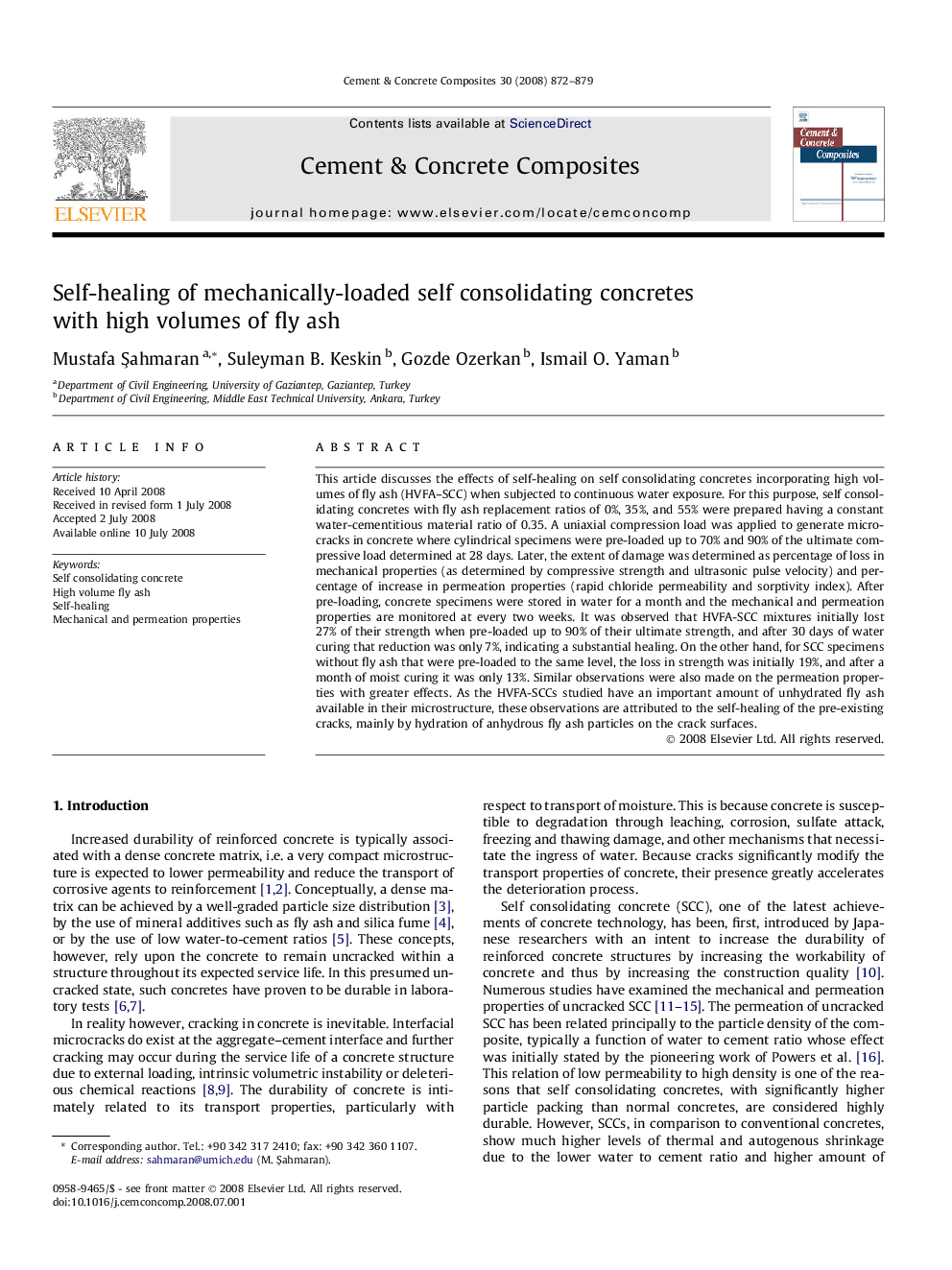| Article ID | Journal | Published Year | Pages | File Type |
|---|---|---|---|---|
| 1455454 | Cement and Concrete Composites | 2008 | 8 Pages |
This article discusses the effects of self-healing on self consolidating concretes incorporating high volumes of fly ash (HVFA–SCC) when subjected to continuous water exposure. For this purpose, self consolidating concretes with fly ash replacement ratios of 0%, 35%, and 55% were prepared having a constant water-cementitious material ratio of 0.35. A uniaxial compression load was applied to generate microcracks in concrete where cylindrical specimens were pre-loaded up to 70% and 90% of the ultimate compressive load determined at 28 days. Later, the extent of damage was determined as percentage of loss in mechanical properties (as determined by compressive strength and ultrasonic pulse velocity) and percentage of increase in permeation properties (rapid chloride permeability and sorptivity index). After pre-loading, concrete specimens were stored in water for a month and the mechanical and permeation properties are monitored at every two weeks. It was observed that HVFA-SCC mixtures initially lost 27% of their strength when pre-loaded up to 90% of their ultimate strength, and after 30 days of water curing that reduction was only 7%, indicating a substantial healing. On the other hand, for SCC specimens without fly ash that were pre-loaded to the same level, the loss in strength was initially 19%, and after a month of moist curing it was only 13%. Similar observations were also made on the permeation properties with greater effects. As the HVFA-SCCs studied have an important amount of unhydrated fly ash available in their microstructure, these observations are attributed to the self-healing of the pre-existing cracks, mainly by hydration of anhydrous fly ash particles on the crack surfaces.
